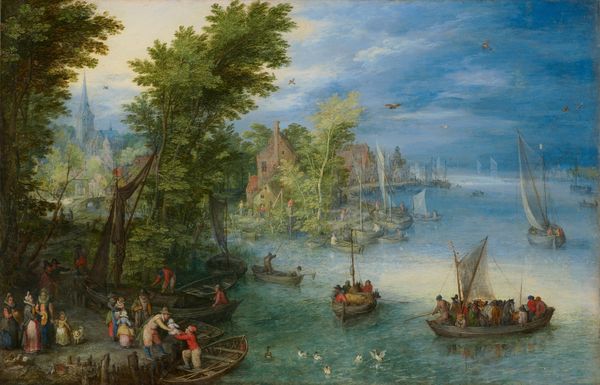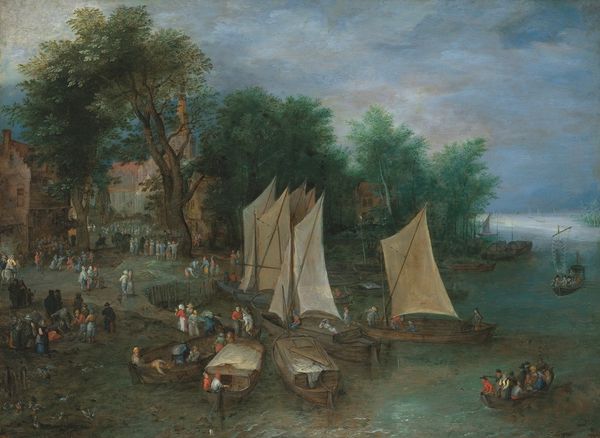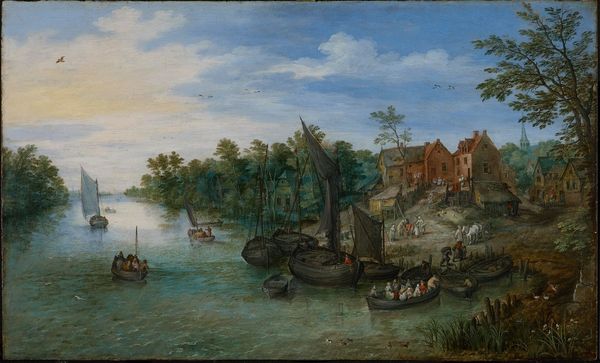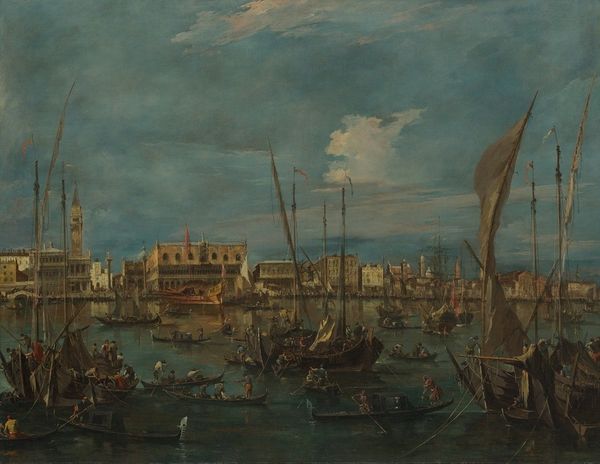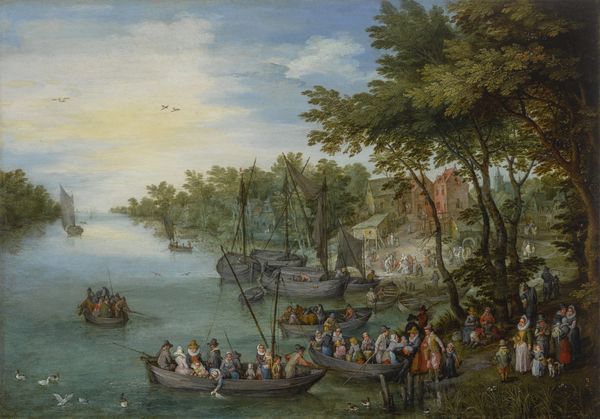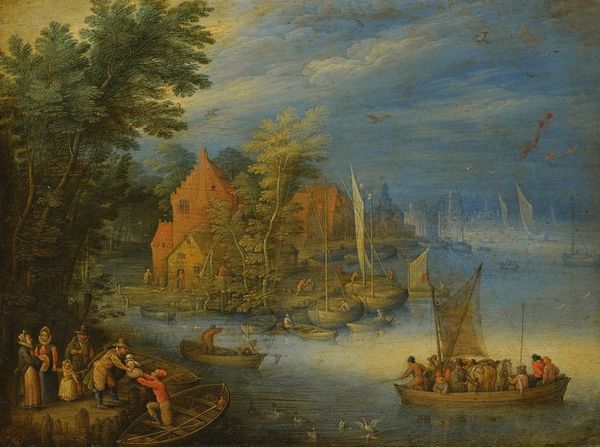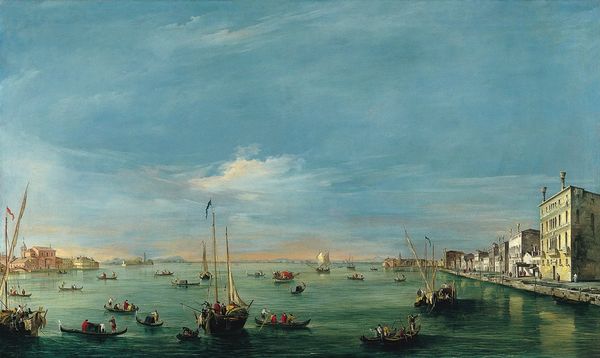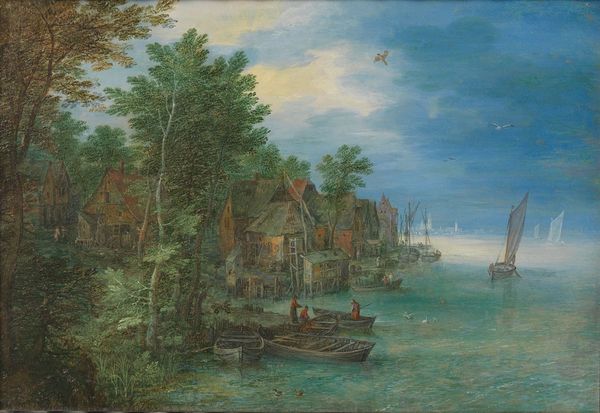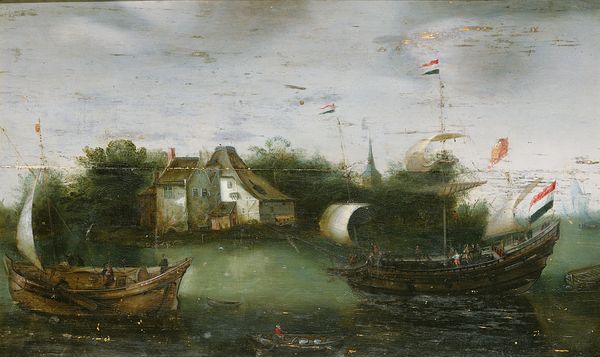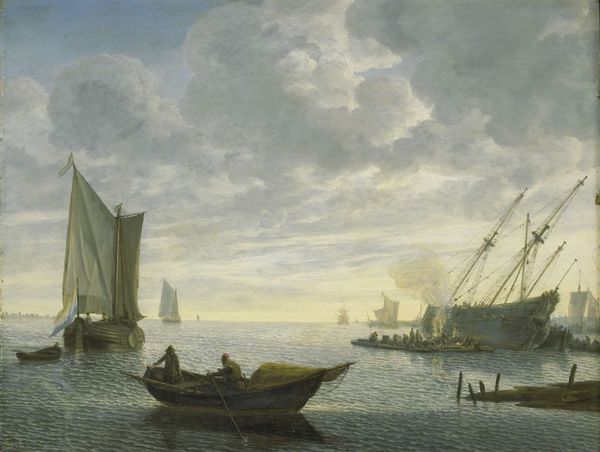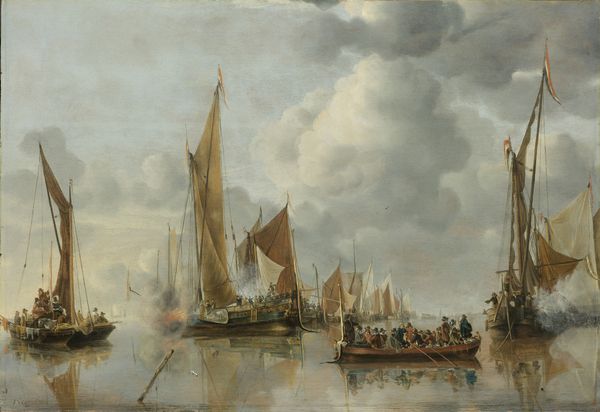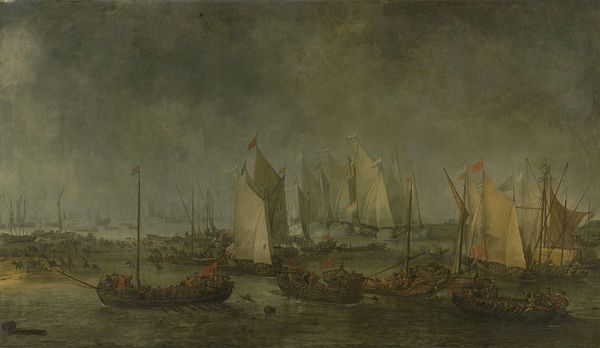
painting, oil-paint
#
baroque
#
dutch-golden-age
#
painting
#
oil-paint
#
landscape
#
oil painting
#
cityscape
#
genre-painting
#
realism
Copyright: Public Domain: Artvee
Curator: Standing before us is "View of a City along a River," an oil painting created around 1630 by Jan Brueghel the Younger. Editor: It's so wonderfully busy! Feels like a dollhouse version of a bustling port. Like watching a play unfold in miniature. Curator: It's interesting you say that, because genre painting, or scenes of everyday life, were very popular at this time, and Brueghel's painting is a fantastic example. He inherited his meticulous style from his father, Jan Brueghel the Elder. Editor: Meticulous is right. Look at all those tiny figures! Each with a story, presumably. Though they are almost indistinguishable from one another due to scale. Curator: Certainly. While ostensibly a landscape, it offers social commentary of a sort. Brueghel wasn't merely depicting a location, he was documenting commerce and activity. And it reflects the booming Dutch economy of the 17th century. Notice how he contrasts the activity by the docks with the calm, spacious area on the water beyond them, punctuated by other distant vessels? Editor: Exactly! My eye wants to go beyond the hubbub. Escape into that vast water, almost dissolves into that pale, calming sky. It’s as if Brueghel gave me a headache of activity, then offered me a cool cloth of serenity for my forehead. Curator: He skillfully uses light to direct our attention. The details in the foreground are more defined, pulling us in, while the background is softened, creating a sense of depth. This reflects, in part, principles that were emerging in artistic academies of the day. Editor: You know, for all the historical context and attention to realism, I mostly get this wistful feeling. It is, undeniably beautiful. Despite all the busyness, it’s imbued with a certain…melancholy, maybe? Knowing that all this vibrancy existed, is captured on this small plane. And now, three centuries later, we’re here observing it. Curator: It prompts reflection, certainly, which makes it a compelling record, far beyond the historical specifics of trade, class and topography it documents. Editor: Absolutely. Makes you wonder what a painter in another three hundred years will have to say about our present-day urban landscapes, doesn’t it?
Comments
rijksmuseum about 2 years ago
⋮
This is a typical example of the kind of landscape produced in large numbers in the workshop of Jan Brueghel I. It was probably made by his son Jan Brueghel II. The execution is freer and at the same time harder. Typical of the work of Jan Brueghel II is the way in which details, such as the church tower, are delineated with the tip of the brush.
Join the conversation
Join millions of artists and users on Artera today and experience the ultimate creative platform.
